Lecture
When designing electronic devices, one has to solve a diverse range of tasks. Depending on the specific task, the constructive solution also changes significantly. Let's look at some of the problems that have to be solved when designing electronic devices:
Consider a few examples of solving these problems. At the same time, in order to evaluate the variety of technical solutions, we will try to select rather diverse solutions. As a first example of the design of an electronic device, consider a cellular antenna. It is shown in Figure 1.

As can be seen from the appearance of the antenna, in this case it is necessary to solve problems of resistance to wind load, raising the antenna to a given height, placing several antennas and microwave relay links on one mast, resistance to high and low temperatures, rain and snow, and vandal resistance.
Similar issues have to be addressed for the container of cellular equipment. However, there are features. In this case, the equipment should not always be lifted to a great height (sometimes you have to do this to protect against vandals or to reduce losses in the feeder). At the same time, it is necessary to solve the issues of access to the equipment of service personnel and ensuring uninterrupted power supply. An example of the appearance of the container of electronic equipment is shown in Figure 2.
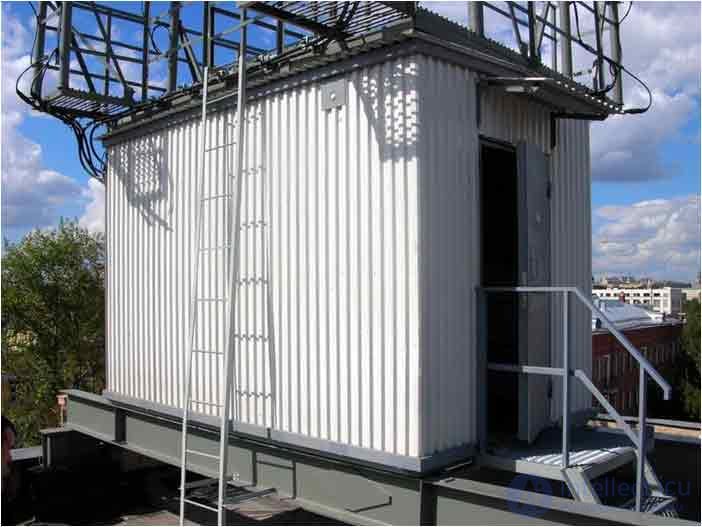
Inside the room or container, the laying of power and signal cables, access to individual nodes of electronic equipment, which is usually located in 25-inch racks or cabinets, is of great importance. These features also lay their imprints on the design of enclosures, cabinets, gutters for cables and shields. The appearance of the room with 25-inch racks of electronic equipment and cables laid in the grooves is shown in Figure 3.

Inside the 25-inch rack can accommodate various components of electronic equipment. As an example, Figure 4 shows an uninterruptible power supply rack. It contains batteries and DC-AC voltage converters.
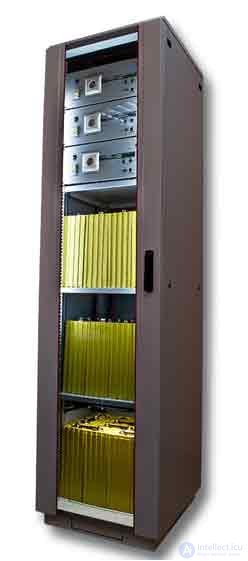
The structural elements of the 25-inch rack are shown in Figure 5.
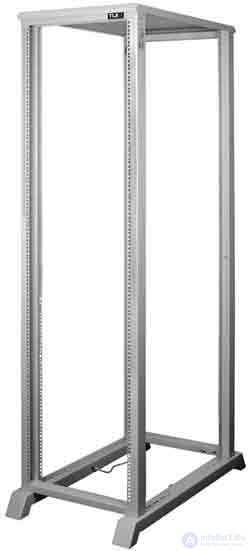 |
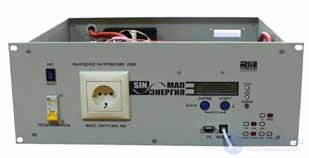 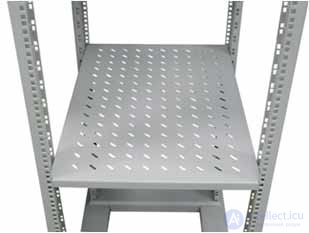 |
This figure shows that due to the large number of holes in the supporting structure of the rack, the devices in it can be fixed at different heights. The presence of shelves for this rack allows you to give the rack mechanical rigidity and place in the rack devices and components of electronic equipment of non-standard size.
A completely different approach is used in the design of portable equipment. If, when designing fixed equipment, the focus is on standardization, then in designing portable equipment, the main attention has to be paid to dimensions, weight, and design of electronic equipment. As an example, Figure 6 shows the appearance of portable radio stations.

Figure 7 shows the appearance of the car radio stations.
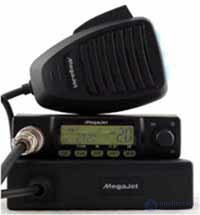
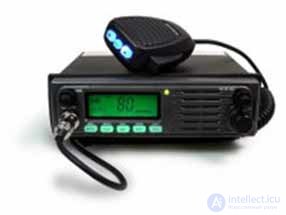
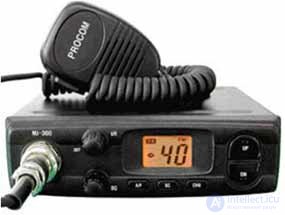
In these devices it is necessary to pay much attention to the electromagnetic compatibility of electronic equipment. It is usually not enough to draw a schematic diagram of the device, it is necessary to develop the design of screens, input and output units of electromagnetic energy accordingly. An example of the internal screening of electronic equipment is shown in Figure 8.
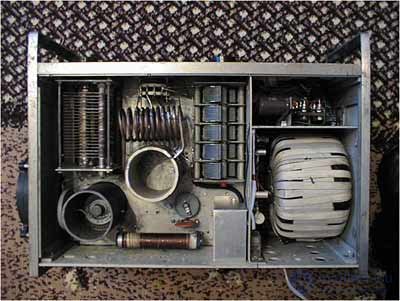
Nevertheless, in spite of the huge variety of types of electronic equipment, in most cases, for the constructive provision of mechanical strength, electronic components are placed on printed circuit boards. Before embarking on the design of printed circuit boards, we briefly consider the types of design of electronic components.
Comments
To leave a comment
Design and engineering of electronic equipment
Terms: Design and engineering of electronic equipment